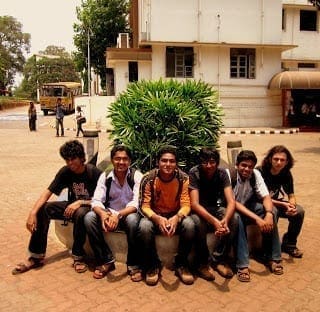
This is an excerpt from an article by Ramachandra Guha, published in The Telegraph newspaper on 20th Nov 2010.
| Appams Delicious |
The finest meal I have had was in the Admaru Mutt, a home for priests connected to the famous old Krishna temple in Udupi. The year was 1994 and I had come to the neighbouring town of Manipal to attend a seminar on the occasion of Mahatma Gandhi’s 125th birth anniversary. The seminar was organized by the Kannada writer, U.R. Ananthamurthy, and it was at his initiative that the participants were taken to the Mutt for lunch.
Manipal and Udupi lie between the sea and the Western Ghats. The terrain is staggeringly diverse, and the plant life too. Over the centuries, humans have taken advantage of nature’s bounty to nurture a suitably varied cuisine. The wild mango found in the Ghats lends itself to a fabulous pickle. Another achaar special to the area is made from bamboo shoots. The rainfall is heavy enough to favour the jackfruit, an item rare elsewhere in India, here eaten in the form of salted chips or a spiced curry. All other vegetables known to humans are grown here as well. So are a great number of pulses. These are eaten with a soft and aromatic rice, made from a salt-resistant variety of paddy raised in fields close to the sea. Meanwhile, the district’s cattle range freely in the forest; their milk, and its derivatives, therefore have a freshness and sweetness missing in more arid or more contaminated environments.
In theory, every resident of the Udupi district can take advantage of this natural and cultivated diversity. In practice, it is only the priests who have the time, and the leisure, to make the most skilful use of their surroundings. Sustained, in every sense, by those who labour on field and in office, they accord equal importance to the satisfaction of the palate and to the study of the scriptures.
For Ananthamurthy’s guests, the Admaru Mutt had prepared their ‘special’ lunch, which had as many as 42 items listed on the menu. We squatted on the floor, a banana leaf in front of us, as the younger priests brought them to us one by one. On my left sat a Bengali scholar to whom a meal without any meat was an eccentricity reserved for unfortunate widows. On my right was a Sikh sociologist, in whose carnivorous culture what we were being served was known dismissively as ghaas-phus — grass and such-like rubbish. By the end of the meal, they were as satisfied as I was.
I was reminded of that meal in Udupi while reading a recent issue of The New Yorker, where an American critic had reviewed Eating Animals, a polemic by Jonathan Safran Foer against the ways in which animals are reared, slaughtered and eaten in the United States. The reviewer noted that the book “closes with a turkeyless Thanksgiving. As a holiday, it doesn’t sound like a lot of fun. But this is Foer’s point. We are, he suggests, defined not just by what we do; we are defined by what we are willing to do without. Vegetarianism requires the renunciation of real and irreplaceable pleasures. To Foer’s credit, he is not embarrassed to ask this of us.”
Read the Rest of the Article here – APPAMS ARE YUM – The aesthetic case for vegetarianism




Be the first to comment